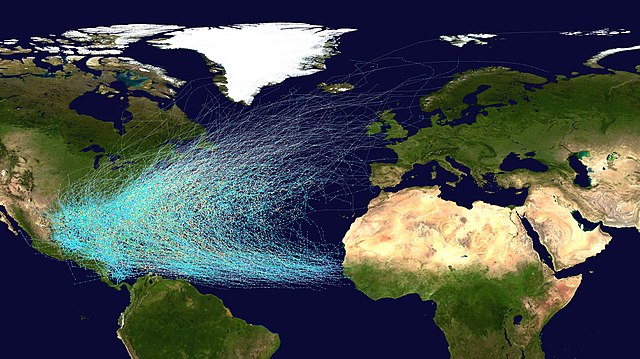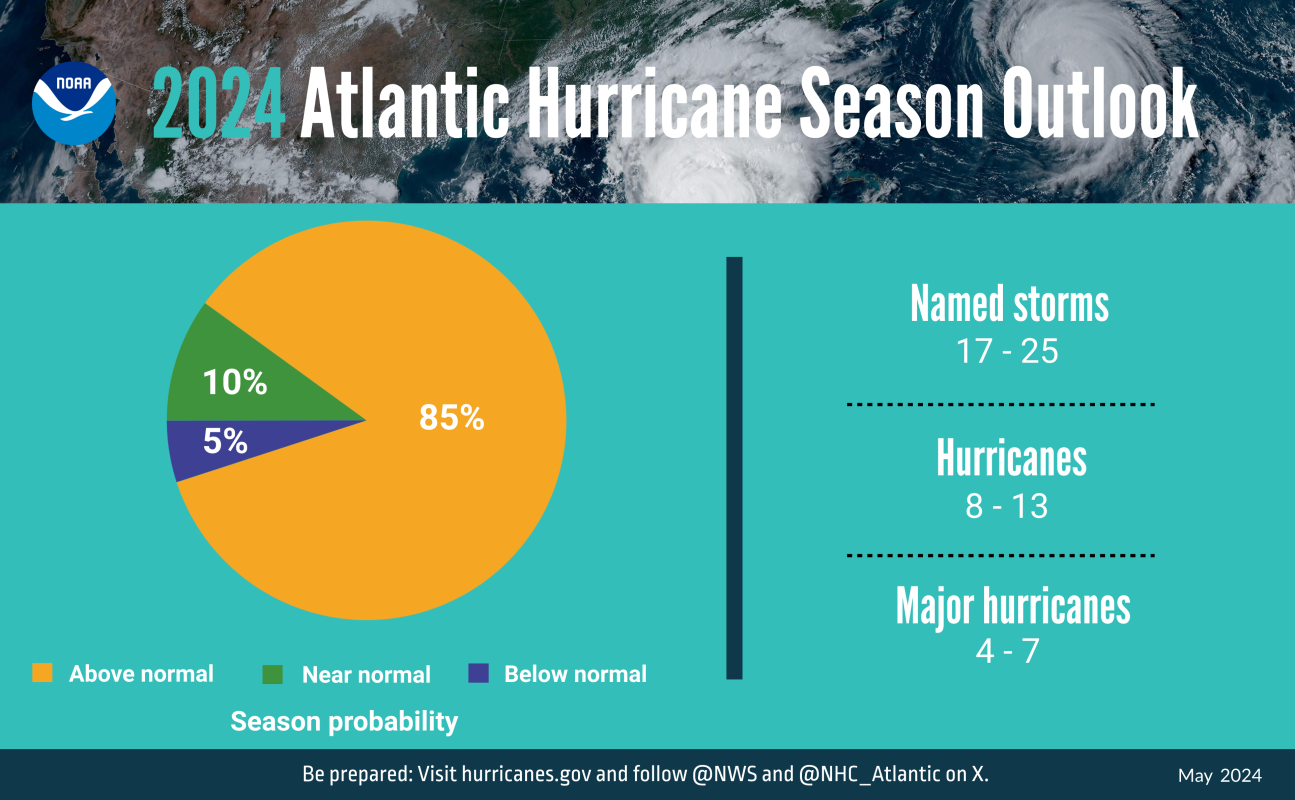 Did you know that we’re currently in the middle of peak Atlantic hurricane season?
Did you know that we’re currently in the middle of peak Atlantic hurricane season?
From August through October, hurricane activity is usually at its busiest. This week, Hurricane Francine struck the Gulf coast of Louisiana this week as a Category 2 before weakening to a tropical storm.
Earlier this year the National Oceanic and Atmospheric Administration (NOAA) forecasted that 2024 would be a very active season, one for the history books! Strangely, however, the Atlantic Ocean has been unusually quiet, following Hurricane Ernesto on August 12th. Let’s learn more…
Predicting Hurricanes
Scientists use data from computer models and satellite imagery to monitor and track weather events. Satellites monitor weather patterns, cloud patterns, ocean temperatures, and more in real-time. NASA satellites track storms from right when they are formed. Polar satellites orbit the Earth twice each day, collecting data.
 Computer models simulate the ocean and atmosphere using complex mathematical equations to project into the future. By using different computer models to account for different storms, researchers make the best decisions and more accurate predictions.
Computer models simulate the ocean and atmosphere using complex mathematical equations to project into the future. By using different computer models to account for different storms, researchers make the best decisions and more accurate predictions.
The NOAA predicted between eight to thirteen hurricanes this year, and so far three of them have occurred. Apart from Ernesto, other major hurricanes were Hurricane Beryl, a Category 5, as well as Hurricane Debby which heavily affected the Florida area. Due to these extreme storms, all signs pointed to a very active season starting in September.
According to Dr. Klotzbach of Colorado State University, we’ve never experienced this kind of gap in hurricanes since 1968!
What Could Be Some Reasons?
One explanation is the recent high-intensity rainfall in the Sahara. The rainfall in the Saharan desert has been mysterious since normally the atmospheric disturbances over Africa move across the Atlantic Ocean. Instead, there’s a big trend of storms causing rainfall in northern Africa, with areas around the Sahara like Mauritania and Mali experiencing above-normal rain.
Apart from this, the spread of Saharan dust in the Atlantic could also explain the shortage of hurricanes. The increase of dust and the very dry air on the eastern Atlantic affects cloud formation.
Despite the unusual season we’ve had so far, scientists still say it’s not wise to stop watching the forecast or to think hurricane season might be over. Based on historical activity, September 10th is the peak of the season, and there is typically more activity after.
While we don’t fully know if earlier forecasts will prove to be accurate, with the change of climate around the Atlantic, from Africa to the United States, hurricane patterns seem to be not as they were before.
Sources: NY Times, NOAA, Miami Herald, ABC News







